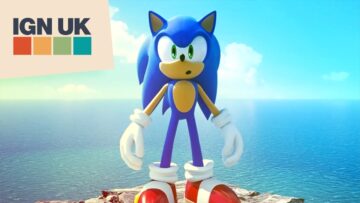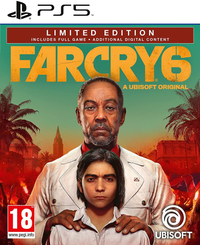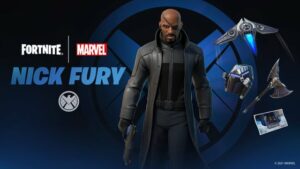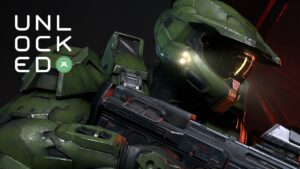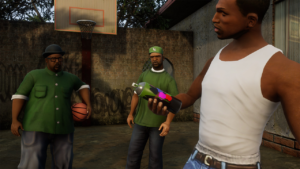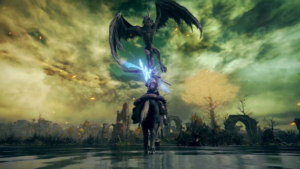Starfield is one of the most hotly anticipated games of the next few years. Coming from the team that brought us the Elder Scrolls and Fallout series, Bethesda’s space-focused RPG has built excitement since it was announced in 2018, despite very little of it being actually shown. With a 2023 release planned, the recent gameplay reveal finally gave us a look at the upcoming Xbox and PC exclusive, and a chance to understand just what the team plans to deliver.
At a headline level, the game is based on an evolved version of the Creation engine. Entitled the Creation Engine 2, it has clear similarities within its rendering output to both Fallout 76 and Skyrim, which were both built on its predecessor. Fallout 4 and later games ushered in some substantial changes to the engine, such as physically based lighting shaders and materials, a deferred tile-based rendering pipeline, enabling high dynamic light sources, volumetric lighting, and other modern techniques. But the technology delivers a great deal more than just visuals. Havok physics aids animation, for example, and AI and quest building stem from the engine’s Radiant system – much of these are what make up the core DNA of Bethesda games.
Before we go further, keep in mind this is all based on the work in progress footage shown, so some or all of these areas could change upon release.
Rendering Improvements
Fallout 4 and Fallout 76 improved on building atmosphere with real world rendering and scale. From your emergence out of the shelter to the ruined wasteland sprawling out in front of you, to the depth it created with Volumetric lighting, it instantly had an imposing and grandiose feel to it. Dynamic time of day and Physics-Based Rendering materials (PBR) all aided the reality of that, with Projected Cube maps across metallic and diffuse surfaces, screen space reflections and shadow-casting light sources enhancing the visuals throughout.
Starfield has certainly taken this as the baseline and improved the resolution, composite levels of those materials, and some form of Global Illumination bounce now factored in. Scale is, again, front and centre here, with long, barren vistas much like Fallout. Height fog is again used, which will be a combination of flat 2D billboard sprites that can be raised and lowered to create depth and simulate atmospheric scattering of the air pollution and light reactions. Then volumetrics are used, but mostly here within the interior sections, as they appear to have a distinct change to them from the exterior sections. Shadow-casting light sources are obviously higher, due to the electrical lights dotted around them, as are the shadow map quality themselves, with outdoors using a softer, penumbra effect, but with an obvious lower resolution cascade which causes dithering. These do appear to be using a reconstruction or TAA-specific pass, causing some creatures’ shadows to be more stable but exhibit ghosting artefacts as they move.
The light and shadow effects, mixed with Volumetrics and Cube maps, create a metallic look to most sections shown, with a high gloss on surfaces, metallic or not. This also shows, from what we see here anyway, that Screen Space Reflections (SSR) likely remain within the engine and have not been replaced with any Ray Traced reflections or other post effects. This is not inherently a bad thing, but the game does not use a great deal of SSR, if any, from the shown sections thus far, meaning Projected Cube maps and Imposter light probes are relied on to simulate specular highlights and emphasise material quality. This may be a dual target of keeping resolutions and performance targets as high as possible across all platforms, ensuring the game can scale and run on a lower-end PC. It’s a good start for sure, with the rocky surfaces and tech noir-like cities showing that the art and tech team have created a variety within the engine and game world to ensure it’s not just 1000+ planets that are all various shades of copy and pasted grey.
Character Improvements
Characters and emotion are another core aspect of Bethesda games, and Starfield does look to have made a significant improvement here. The PBR materials show better and more fleshy skin, a simulated Sub Surface Scattering is present, and specular highlights on skin and higher bone rigging on faces show a demonstrable improvement over Fallout.
The quality is also much higher in conversation sections we’ve seen that incorporate both main and side quest NPCs. Performance capture here would be far too large an undertaking, so these will likely be built using an improved Text to Speech Phonetic system we have seen in earlier games. The shape of vowels and letters is good, with a good blend of facial expression to emphasise the meaning.
Like many of these solutions it can have wooded moments, but considering the sheer extent of dialogue, story, and quests the game will contain, the level and quality shown is certainly good enough to allow the team to iterate as fast as possible whilst also delivering a high quality for us to enjoy. From a visual and rendering perspective this area is the single biggest improvement I can see from the previous games, and I will be interested to hear more on the specifics around what they have done here to balance the script and voice recordings with the automated or procedural animation systems.
The actual character models you create are not as impressive, with the same issues we have seen in earlier games – namely eye parallax, blinking, pupils, and emotion, made worse by limited facial bones, low hair cards, and a general vertex-shifted feature set to choose from. That said, you will not see yourself a great deal in the game so it may not be that impactful, but it is far from the best avatar creator we have seen.
Animation
Animation itself is another area that has always had mixed results in Bethesda games. Starfield certainly shows improvements, but not to the level we have in the characters. Running, combat, hiding and even walking show clear shifts between animation cycles, helped by the Havok physics when shot or hit. In one section shown, the stiff attack from the enemies and their relatively weak grip on life means they look little more than low level cannon fodder.
This is mirrored again outside with set AI routines and offers a stiff looking combat example, one not helped by another key area that remains from previous Bethesda games: dynamic movement of the world, and specifically foliage and destruction. Boxes are either crates to open or adamantium barricades that are either weighted and floaty or immovable. If I could make a request to the team, it would be to integrate physics more into the world. Allow trees and shrubs to bob and sway, and objects to break and react to pressure waves of explosions, or break down when used as cover under fire. This would not only enhance the visual presentation we see but also improve the interaction and tactical elements of gameplay. I need to caveat that with the statement at the start, this is all we have seen so far, and these ideas may already be in the game or planned to come by launch. The point is the world and materials look great throughout, but the physicality and fragility of that world is an area I would like to see improve.
Animals, robots, and NPCs are another area that is always of good quality in Bethesda games, but not the best. The panning shots and walking section on terra-forma show that little has changed here. Spider-like creatures or the Aliens-like Cargo Skeletal Robot all look similar to what we have seen before. Clear similarities to No Man’s Sky are unavoidable, but the resource collection could be significantly improved with a more dramatic and effects-based level of geometric destruction as you break parts off for mining. This paired with procedural destruction of enemies would really help raise the exploration and combat sections and increase the physicality of what we see here. Everything looks particularly good and physically plausible, but the interaction and rigidity of it is what can lessen the strong impression it has in other areas.
Space Travel & Combat
Of everything we’ve seen, Starfield’s space sections look the most promising to me. The space and galaxy-traversal take me back to the Elite Dangerous days of choosing between trading cargo or hunting for bounties. This could be the hidden gem of the game as you take on missions and then engage in dramatic and dynamic space battles with friend and foe alike. Building your own ship, designing the layout, chassis, cockpit, weapons arsenal and more – this is sci-fi heaven to a Trekkie like myself. Combat looks to play into the floaty physics we see elsewhere in the game and works perfectly here, with particle explosions, dogfight cloak and dagger, and even warp speed travel.
Some questions do remain, such as how linked is space travel to the planet landings – rumblings are these sections are merely canned animations played out as you enter the atmosphere. The range of planets and locations shown is positive so far, with fauna-filled planets and dense neon metropolises joining the baron craters and rocky plains we have seen so far. Still, with Bethesda claiming the game to have more than 1,000 planets to explore, it remains to be seen just how many of those are interesting locales actually worth exploring.
From a resolution and performance level, the footage released targets a full 3840×2160 level at 30fps on Series X. It would be of great benefit for the team to also offer a dynamic 4K/60fps mode, which would go a long way and help alleviate the well-founded worry of Bethesda games struggling to hit that 30fps level. Fallout 4 did have some issues on Xbox One and PS4 back in 2015, and although PS4 was worse at the start and later patched, both remain with some impactful sub 30fps sections that did affect your enjoyment. The Work in Progress footage here did highlight dips below that 30fps level at times, but with the release data a good way off and the prior history of Bethesda games, I have a cautious but optimistic view of the final release.



